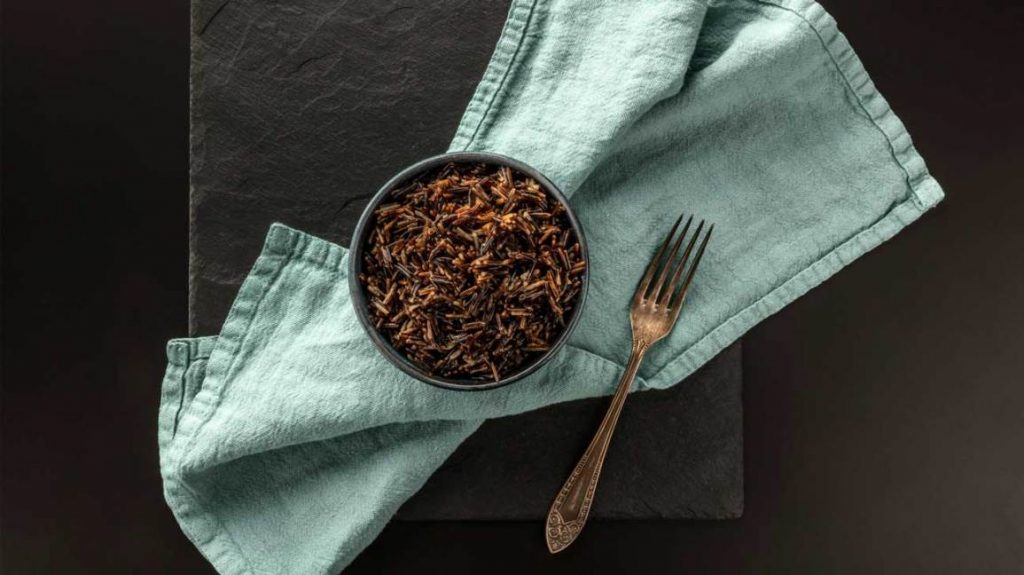Wild Rice Nutrition Review — Is It Good for You?
Wild rice is a whole grain that has been growing in popularity in recent years.
It’s very nutritious and believed to offer numerous health benefits.
Though research is limited, a few studies have shown great promise.
This article tells you everything you need to know about wild rice.

What is wild rice?
Despite its name, wild rice is not rice at all.
Although it is the seed of an aquatic grass like rice, it’s not directly related to it.
This grass grows naturally in shallow freshwater marshes and along the shores of streams and lakes.
There are four different species of wild rice. One is native to Asia and harvested as a vegetable. The remaining three are native to North America — specifically the Great Lakes region — and harvested as a grain.
Wild rice was originally grown and harvested by Native Americans, who have used the grain as a staple food for hundreds of years. It’s only referred to as rice because it looks and cooks like other types of rice.
However, it tends to have a stronger flavor and higher price.
SUMMARY
Wild rice is a species of grass that produces edible seeds resembling rice. It tends to have a stronger taste and steeper price than rice.
Wild rice nutrition facts
A 3.5-ounce (100-gram) serving of cooked wild rice provides :
- Calories: 101
- Carbs: 21 grams
- Protein: 4 grams
- Fiber: 2 grams
- Vitamin B6: 7% of the Daily Value (DV)
- Folate: 6% of the DV
- Magnesium: 8% of the DV
- Phosphorus: 8% of the DV
- Zinc: 9% of the DV
- Copper: 6% of the DV
- Manganese: 14% of the DV
With 101 calories, 3.5 ounces (100 grams) of cooked wild rice provides slightly fewer calories than the same serving of brown or white rice, which offer 112 and 130 calories, respectively .
Wild rice also contains small amounts of iron, potassium, and selenium.
The low calorie and high nutrient contents make wild rice a nutrient-dense food. It’s a very impressive source of minerals and a great plant-based protein source.
SUMMARY
Wild rice boasts impressive amounts of several nutrients, including protein, manganese, phosphorus, magnesium, and zinc.
Higher in protein and fiber
Wild rice contains more protein than regular rice and many other grains.
A 3.5-ounce (100-gram) serving of wild rice provides 4 grams of protein, which is twice as much as regular brown or white rice .
Though it’s not a rich protein source, wild rice is considered a complete protein, meaning it contains all nine essential amino acids.
Meanwhile, the fiber content of wild rice is the same as brown rice, with each providing 1.8 grams of fiber per 3.5-ounce (100-gram) serving. On the other hand, white rice provides little to no fiber.
SUMMARY
Wild rice contains more protein than other types of rice but the same amount of fiber as brown rice.
Source of powerful antioxidants
Antioxidants are important for overall health.
They’re believed to protect against aging and reduce your risk of several diseases, including cancer .
Wild rice has been shown to be high in antioxidants .
In fact, in an analysis of 11 samples of wild rice, it was found to have 30 times greater antioxidant activity than white rice .
SUMMARY
Wild rice is very high in antioxidants, which may help reduce your risk of several diseases.
May be good for your heart
While research on wild rice itself is limited, many studies have examined the effects of whole grains, such as wild rice, on heart health.
Generally, a higher intake of whole grains is associated with a decreased risk of heart disease .
A review of 45 studies noted that people who ate the most whole grains had a 16–21% lower risk of heart disease, compared with those who ate the least .
In particular, one study found that increasing your whole-grain intake by 25 grams per day may decrease your risk of a heart attack by 12–13% .
Another study observed that eating at least six servings of whole grains per week slowed the buildup of plaque in the arteries.
Lastly, several animal studies indicate that eating wild rice reduces LDL (bad) cholesterol and prevents plaque buildup in arteries, which may lower heart disease risk
SUMMARY
Eating wild rice has been shown to improve heart health in animal studies. Similarly, other studies suggest that eating whole grains like wild rice is linked to a decreased risk of heart disease.